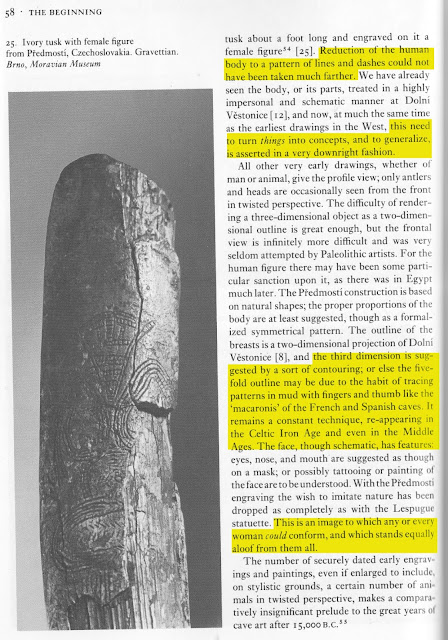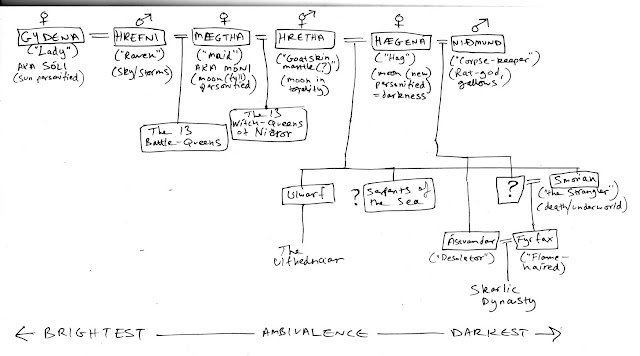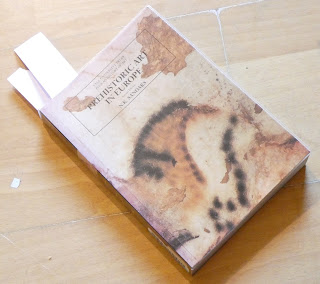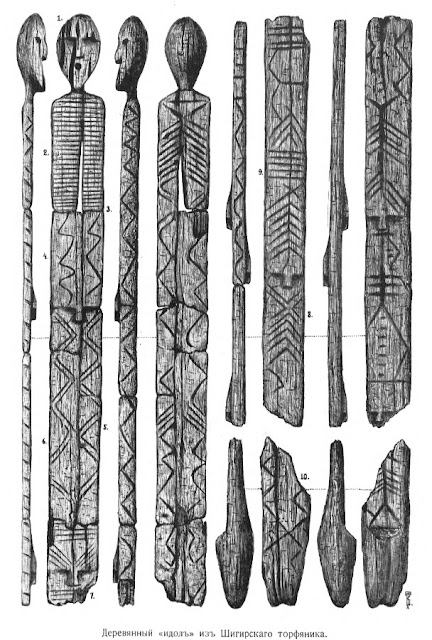Geometric art, Climate Change and Extinction

While reading through N.K. Sandars' Prehistoric Art in Europe has so far been hugely stimulating, as previously posted, the above page in particular drew a number of things to my attention: considerations of different forms of representation, in this case, the geometric, even abstract, depiction of universality of form; but also the idea of finger-art, which may be the oldest form of sentient art imaginable, if we consider an appendage tracing hesitantly in sand, clay or snow - an action which is, in the poem, defined as the origin of the written form of the Rockcats' language, Sli'ith, and its cursive nature (which, visually, is suggestive of Arabic script): "Few men could write, but Rockcats long recorded words in their tongue, Sli'ith; and unlike rigid runes, their writing flowed in curling twists and tails, for once they wrote their words in sand, when on the coast of Kren they stood; a new-born people, elder tribe; those ancient days when all were one....




